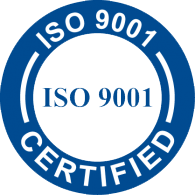CERCHAR Abrasivity Test Equipment
CERCHAR test is one of the most common methods of friction measurement in the laboratory. The Cerchar Abrasivity Index was presented for the first time in the 1970s by the French Coal Mining Research Institute. Nowadays, to do these tests two types of including tools are used Cerchar tool and West tool. The main difference between these two tools is the shape and duration of the test. In the Cerchar tool, the sample is kept fix in the jaw clamp. Then the needle attached to the lever of the device, with a weight of 7 kg, hangs for one second and 1 cm long, stretch on a flat horizontal surface of just newly broken stone. In the West tool model, the stone sample moves in about 1 cm in 10 seconds and the test needle with a weight of 7 kg, is kept high above. The stone movement causes the needle to be pulled over.
The main tool for this test is design and proposed by CERCHAR. This test is performed by sharpening the tip of a standard steel rod with the hardness between 54 to 56 Rockwell and a tensile strength of 2000. This pin is pulled under a static load of 7 kg at 1 cm in 10 seconds on a newly broken flat surface of the rock stretch in a horizontal position. Due to stretch the head of sharpening pin on the stone surface, the sharpening head of the pin reduces and become flattened. Then, the amount of flattening the head of the steel pin after a stretch of the stone surface, inspect by microscope.
|
Standard:
|
ASTM D7625
|
|
CERCHAR Abrasivity Test Equipment
|
SMRO-3200
|
Technical Specifications:
|
Dimensions:
|
40×40×45 cm (L×W×H)
|
|
Approximate Weight:
|
35 Kg
|
|
Sample Diameter:
|
40 to 100 mm
|
|
Loading:
|
Static
|





